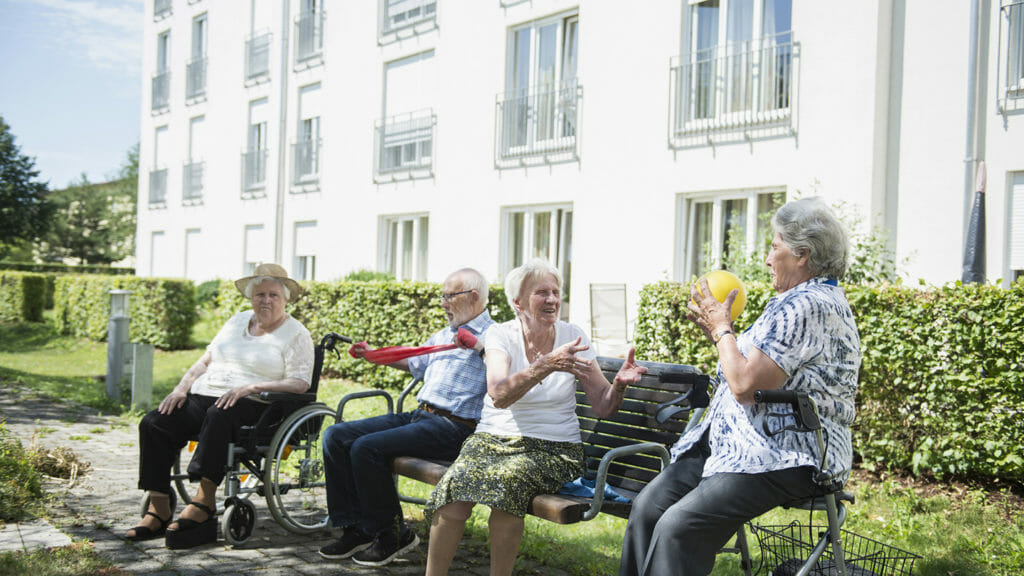
Consumers are going to force change in senior living due to their enormous needs and demands — but not for the products that exist today, according to industry experts.
A panel of long-term care experts on Thursday, during the Milken Institute’s “Future of Health Summit” event, discussed new ways to promote models that integrate health and housing to enable older adults to thrive.
Affordability and connected health services are the two most critical policy interventions that local leaders must prioritize as the aging population grows exponentially in the coming decades, according to a survey by the institute.
Creating a new senior living model
Although most older adults say they prefer to age in place, many will not be able to do so unless access to health and social services are connected to their housing, the speakers said. Payers are responding by investing in integrated efforts that address social determinants of health.
Bob Kramer, co-founder of the National Investment Center for Seniors Housing & Care and Nexus Insights founder, noted that the industry primarily has served the Greatest Generation for the past 30 years — a generation he said experienced “accidental longevity.”
Members of this generation, he said, didn’t expect to live as long as they did, and they willingly accepted whatever society offered them — and what society offered was separation from the rest of society via senior housing.
“They were grateful to have survived and grateful for what was offered,” Kramer said. “The next generation and the boomer customer, they’re by no means just grateful to survive. They’re determined to thrive.”
Now, potential residents want “purposeful longevity,” he said, defining it as being connected with everyone else. They don’t just want more years added to their life, but rather more life in those years through volunteerism, lifelong learning opportunities or activism, Kramer said.
“The new customer we’re going to be serving, they don’t want to be seen as the problem. They want to be seen as part of the solution,” he said. “They want to be engaged in society.”
Including ‘wraparound’ services
Tomas Moriarty, CVS Health executive vice president and chief policy and external affairs officer, said that it is not good enough to simply build housing. Housing now must have “wraparound” services and related services and activities, such as transportation, healthcare and meal services.
Jake Rothstein, CEO of Upside, is putting that model into practice. Upside uses existing infrastructure in apartment communities and then tries to make them more suitable for older adults. The model aims to surround residents with a layer of services to duplicate those they would receive in a traditional senior living environment, but with more flexibility and lower cost.
Rothstein said that launching a nontraditional community during the pandemic shone a light on what’s happening in traditional senior living — namely, a lack of flexibility.
“Helping to formulate the model using COVID-19 as an accelerant was beneficial for us overall and moved us forward faster,” he said.
LeadingAge President and CEO Katie Smith Sloan said that the field of aging services has been its own “worst enemy” by segregating older adults.
“The models are saying we need to be together as humans, not based on age, but based on interests and geography,” Sloan said. “That’s the most important thing we can do.”
Catering to the middle market
One effect of the COVID-19 pandemic, Kramer said, was the growth in demand — and cost — of home-based care. Continuing to live at home with the help of a home care aide now is more difficult and more expensive than living in an assisted living community, where residents get meals and have no home maintenance issues, he said.
“We all love our homes,” Kramer said. “Unfortunately, at times, our homes don’t love us back, particularly as we get older.”
In response, he said, the private sector is figuring out ways to “skinny down” its more expensive products to make them more affordable for middle-income consumers. Also, Kramer said, affordable senior housing providers are asking how they can “intercept the lower half of the ‘forgotten middle’ ” before they wind up on Medicaid and cost the nation and the long-term care system more money.
Becoming part of healthcare ecosystem
Collectively, long-term care providers have focused on clinical issues, the need to support activities of daily living, medications and the ability to pay. In the future, Kramer said, the industry must move to value-based care, focusing on predictive, preventive and participatory consumer healthcare.
“Through COVID, senior living came kicking and screaming into healthcare taking place in our buildings,” he said. “We’re a key part of that ecosystem.”
The average assisted living resident has 13 chronic conditions, Kramer said. The issue for providers, he added, is not how they spend time managing those conditions, but finding out from residents what their goals are and how to adjust the care and services provided to them to help residents accomplish those goals.
“We don’t ask what matters to that individual. That needs to drive the approach to healthcare,” Kramer said, adding that providers need access to good data, including information on social determinants of health and population health.
Sloan said that an opportunity exists to have older adults who live in senior housing design what happens in that housing.
“Creating that quality of life that meets their needs, expectations and cultures is an opportunity we’ve overlooked a lot,” she said.


